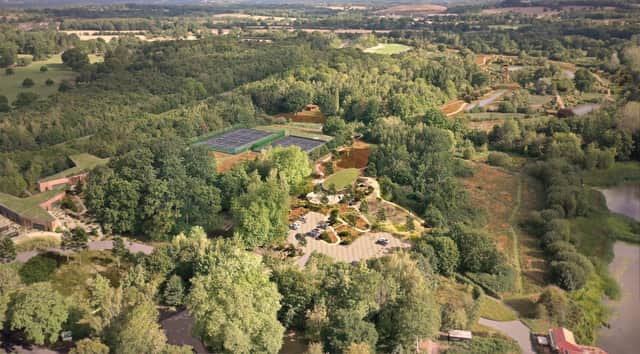Rookwood plans warning - be careful what you wish for...


It was suggested that if the council waited until 2066 to develop the site, the 50 per cent clawback due to the original vendor would lapse ‘overnight’ and the council could double the capital receipt it would receive. An independent professional financial evaluation was also called for.
Firstly, I would say that the allocation of sites in the Local Plan is made on planning grounds rather than purely financial grounds – I will return to this issue later.
Advertisement
Hide AdAdvertisement
Hide AdHowever, since I was asked about the financial implications, I would make the following points.
1. The clawback is arguably a contractual term and to the best of my knowledge, it does not lapse in 2066. I can only assume that Mr Kornycky believes that the clawback would lapse under the perpetuity rules.
The council’s legal advice is that this would not necessarily be the case and the whole premise of the question is potentially flawed.
2. Even if the premise was true, waiting until 2066 is hardly ‘overnight’ and the question completely ignores the time value of money.
Advertisement
Hide AdAdvertisement
Hide AdAnyone controlling a household budget knows that £1 now is worth much more than £1 received in 45 years-time. That is because over time prices tend to rise (inflation) and cash in hand now can be invested to earn 45 years-worth of interest.
Fortunately, elementary business mathematics allows the calculation of the value of £1 in 45 years at today’s prices. It turns out that 45 years-worth of inflation and lost interest is greater than the 50 per cent clawback even if the assumption that the clawback lapses in 2066 were actually true.
3. The financial implications do not end there though. Developing now would deliver 45 years of council tax from all of the homes and 45 years of rents from the affordable homes to the council’s affordable housing company. This substantial income would fund services or earn interest, further enhancing the benefit to the council of acting now.
In short, it is not even close and I can categorically confirm that there is no prospect of the council breaching section 123 of the Local Government act 1972 by developing now rather than procrastinating for 45 years.
Advertisement
Hide AdAdvertisement
Hide AdIn fact, the exact opposite is true. So be careful what you wish for because if the council did employ an independent financial expert, they would in all likelihood advise the council to build 1,100 homes now and maximise the financial return.
Of course, this is no surprise to the council’s property professionals and that is precisely why they considered development of the underperforming asset in the first place.
All that said, I return to my comment in paragraph two above – there are considerations other than purely financial returns.
That is why the council has been consulting with stakeholders and is proposing to modify the scheme.
Advertisement
Hide AdAdvertisement
Hide AdWhilst this would reduce financial return to the council, it would deliver an exemplar scheme in one of the most sustainable sites in the district.
The latest scheme provides the possibility of extending Warnham Nature Reserve on the northern half of the site, protecting it for years to come and would also fund flood mitigation measures with sufficient capacity to address both current flooding concerns and any new development.
Until the scheme is finalised financial evaluations are clearly subject to change and it is pointless asking for definitive valuations now. However it is clear that all of the options looked at so far are considerably more positive than the status quo.
One final thought in closing. It may have escaped many readers’ attention but the Government has been considering restructuring local government.
Advertisement
Hide AdAdvertisement
Hide AdIt has been proposed to replace the existing two-tier system of county councils and district/borough councils with unitary councils.
Those new bodies would probably combine existing districts (one possibility being Crawley, Horsham and Mid-Sussex) and be responsible for all of the services currently provided by WSCC and the districts.
Clearly, any new unitary would have proportionately lower numbers of Horsham-based councillors. For the time being, this initiative is on hold because of Brexit and more recently Covid-19.
However, within the next 45 years this restructure is likely to go ahead. So what, I hear you ask?
Advertisement
Hide AdAdvertisement
Hide AdWell consider the possibility in the medium term of a cash-strapped unitary council trying to fund adult social care, children’s services, and highways.
I wonder what an independent financial expert might advise councillors distributed across the geography of a new unitary council to do with an underperforming leisure asset.
I doubt it would be to develop an exemplar scheme and turn over half the site to a nature reserve.
Glen Chipp
Chief executive,
Horsham District Council
Related stories: